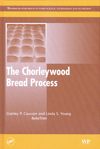In September 2017, Hurricanes Irma and Maria made landfall in Puerto Rico within two weeks of each other, devastating the island, completely cutting off all electricity and drastically reducing access to fresh water. We asked Mario Somoza, president and CEO of Pan Pepín, Bayamon, Puerto Rico, to provide some perspective on the ongoing situation in the U.S. territory one year later.
Douglas J. Peckenpaugh: How did Hurricane Maria impact the food industry in Puerto Rico?
Mario Somoza: Any event that takes down the entire power grid, and leaves most of the island’s residents without running water and communications will have a tremendous impact on the food industry. Every part of the food supply chain was affected: almost all the locally grown crops were wiped out, cargo ships with products for distributors or raw materials for manufacturers could not come in, grocery stores did not have power to operate. It was a very challenging situation from top to bottom. I think the industry as a whole was well prepared and managed the situation as well as could be expected, but the logistical issues with fuel supplies (for operating vehicles and generators) and communications (for processing orders, invoicing, payments, etc.) were unprecedented.
DJP: How did Pan Pepín help provide relief after the hurricane subsided?
MS: Irma came through the area first, and caused widespread devastation in our neighboring islands, much more than in Puerto Rico. We donated several pallets of products that were sent to the B.V.I.’s since food was very scarce in those islands. Two weeks later, with Maria causing so much damage locally, the majority of our efforts were concentrated on our island. We donated product to several organizations, like World Central Kitchen, that were focused on providing meals to those who were most affected. We also partnered with our sister company, B. Fernandez (a major food distributor), to visit some of the hardest stricken areas and give each household a supply of groceries to last a few days. Our marketing department also coordinated visits with our food truck to some of the most remote parts of the island, going out six days a week and impacting over 25,000 people during an 8 week period. I am really proud of how our employees stepped forward to help others while they were dealing with their own situations at home.
DJP: How quickly did Pan Pepín resume business after Hurricane Maria?
MS: Within 48 hours after Maria hit we had started two of the lines in our bakery and were making deliveries to customers. The commitment and resolve of our employees was the key to getting us operating and out in the market so quickly.
DJP: Was Pan Pepín able to retain much of its workforce after the devastating impact of the storms?
MS: Thankfully, the large majority of our employees are still working with us today. After Maria passed, our first priority was making sure our employees and their families were safe. It took us nearly a week to confirm that all our employees were accounted for. Some suffered catastrophic losses of property, but thankfully all were safe. In the days following the hurricane we welcomed their families into our facility where they could have a hot meal, use our bathrooms to take a hot shower, or simply connect to our Wi-Fi for entertainment or news. We also made our water well available to them to fill containers for home use and provided gas for their vehicles so they could get to and from work. We created a matching donations program with a Youcaring.com page, and with the generosity of our industry partners and friends we were able to donate over $100,000 to those employees that suffered great losses. Our workforce showed a tremendous commitment at a very trying time, and I hope that we have corresponded in kind.
DJP: What steps has Puerto Rico taken to recover over the past year?
MS: The scope of the rebuilding task is enormous, first, because every part of the island was affected, and second, because for the last decade we have been in one of the worst financial crisis anywhere in the world. The aid received from the federal government, as well as from several NGO’s has helped accelerate the process of getting the island back on its feet. The major challenge will be rebuilding the infrastructure (energy, water, communications) so that it will hold up better next time around.
DJP: Has Pan Pepín experienced any lingering impacts of Hurricanes Irma and Maria?
MS: The biggest impact to our operation was the destruction of our temperature-controlled warehouse. The building was completely destroyed in the storm so we have had to rent warehouse space outside our facility. This complicates our operation and has presented some challenges to properly service the market, but we are getting better every day. We are also still in the process of repairing the damage to some buildings. But, once again, the level of commitment shown by our employees makes it seem like we are back to our pre-hurricanes operation.
DJP: Has the rest of the food industry in Puerto Rico generally recovered?
MS: In general terms, yes, but there are still serious issues with incoming ocean shipments. There has been limited space on the ships and barges coming in so shipping delays have become the norm. This translates into out-of-stocks at the point of sale for some basic staples. In our case, we are carrying larger than usual inventories of ingredients and packaging materials to protect us from those unexpected delays.
DJP: What is the current state of overall recovery on the island? Has electricity been completely restored?
MS: Electricity is not yet back to 100%, but very close to it. Visitors to the island may not notice any lingering effects, but as residents we can identify businesses, or even tourist attractions, that have not reopened since Maria. However, any tourist or business visitor can travel safely to the island, stay in a nice hotel, enjoy dinner in some of the best restaurants in the Caribbean, and enjoy everything our beautiful island has to offer.









